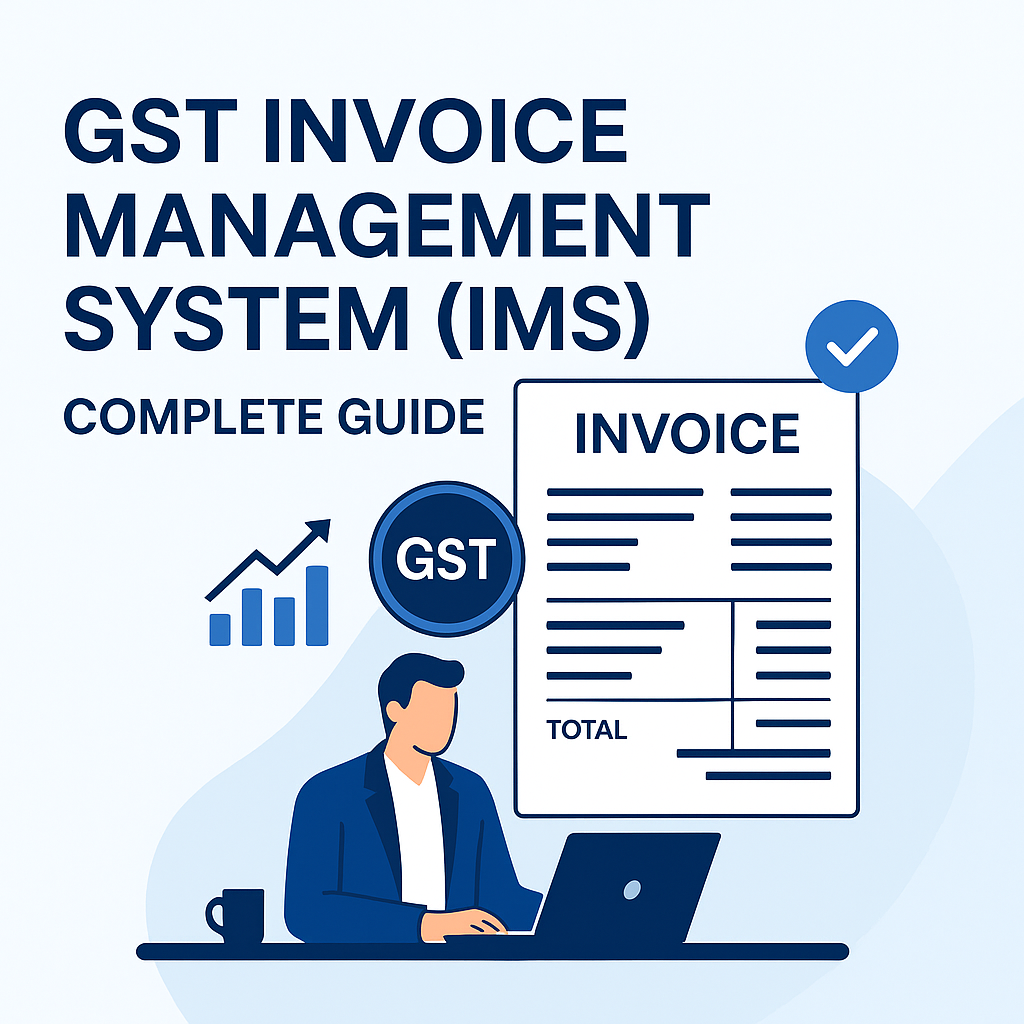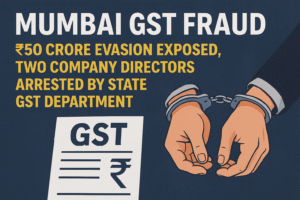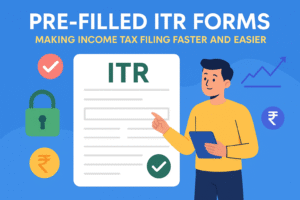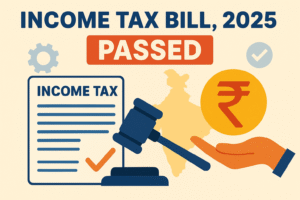1. Introduction
The introduction of the Goods and Services Tax (GST) in India has significantly streamlined the indirect tax regime, promoting transparency and accountability.
As part of this evolution, the GST Invoice Management System (IMS) plays a critical role by helping businesses automate their invoice management and ensure compliance.
In this guide, we will explore the concept, benefits, features, and working of the IMS, and how businesses can leverage it for operational efficiency and legal compliance.
—
2. Table of Contents
1. Introduction
2. What is GST Invoice Management System (IMS)?
3. Objectives of GST IMS
4. Key Features of GST IMS
5. Benefits of Using GST IMS
6. How Does GST IMS Work?
7. Major Components of GST IMS
8. Who Should Use GST IMS?
9. Integration of IMS with E-Invoicing and GST Returns
10. Step-by-Step Guide to Implementing GST IMS
11. Common Challenges in GST IMS Implementation
12. Solutions to Overcome Challenges
13. Best Practices for GST Invoice Management
14. Compliance Requirements and Penalties
15. Future of GST Invoice Management System
16. Conclusion
17. References
—
3. What is GST Invoice Management System (IMS)?
The GST Invoice Management System (IMS) is an automated software platform designed to manage and streamline GST-compliant invoices.
It helps businesses:
- Generate invoices
- Validate GST compliance
- Track invoice lifecycle
- Store and retrieve invoices securely
- Sync invoices with GST returns (GSTR-1, GSTR-2A, GSTR-3B)
It acts as a bridge between business ERP systems and the government’s GST portal (GSTN), ensuring seamless and accurate reporting of all taxable transactions.
—
4. Objectives of GST IMS
The primary objectives of implementing an Invoice Management System under GST are:
- Automation of Invoicing: To reduce manual work, errors, and delays.
- Compliance: To ensure all invoices meet GST regulations.
- Transparency: To enable real-time tracking and avoid tax evasion.
- Ease of Filing: To simplify monthly and quarterly GST return filings.
- Audit Preparedness: To maintain organized records for audits and assessments.
—
5. Key Features of GST IMS
A robust GST IMS offers several features, including:
5.1 Invoice Generation
Create GST-compliant invoices with all mandatory fields such as GSTIN, HSN/SAC code, tax rates, etc.
5.2 Invoice Validation
Validate the accuracy of details like GST numbers, tax amounts, and item classification.
5.3 Real-time Integration
Integrate seamlessly with ERPs and the GSTN for real-time invoice submission.
5.4 Storage & Retrieval
Secure cloud-based storage of invoices, easily searchable and retrievable for future needs.
5.5 Reconciliation
Match inward and outward supplies to detect mismatches, preventing Input Tax Credit (ITC) losses.
5.6 Reporting
Generate reports on invoice summary, pending invoices, reconciliation mismatches, etc.
—
6. Benefits of Using GST IMS
Some major advantages of using a GST Invoice Management System are:
- Efficiency: Reduces time spent on manual invoicing.
- Accuracy: Eliminates errors in invoice generation and submission.
- Compliance Assurance: Ensures GST law compliance with all latest rules and amendments.
- Cost Saving: Reduces manpower costs related to GST filings.
- Improved ITC Claiming: Better matching of purchases and claims.
- Audit Ready: Organized and systematic invoice records help during audits.
—
7. How Does GST IMS Work?
The working of GST IMS typically involves:
1. Invoice Creation: Businesses generate invoices in their ERP or accounting system.
2. Validation: The IMS validates invoice fields for GST compliance.
3. IRN Generation (in case of e-invoicing): IMS connects with Invoice Registration Portal (IRP) for IRN and QR Code.
4. Storage: The validated invoices are stored securely in cloud servers.
5. GST Return Preparation: The system automatically fetches the invoice data to populate GSTR forms.
6. Matching and Reconciliation: Matches purchase (GSTR-2A/2B) and sales data to avoid mismatches.
—
8. Major Components of GST IMS
The critical modules of an IMS are:
- Invoice Generation Engine
- GST Validation Engine
- Invoice Storage Repository
- Reconciliation Module
- GST Return Filing Interface
- Audit Trail Module
Each component ensures smooth management of invoices from creation to return filing.
—
9. Who Should Use GST IMS?
GST IMS is essential for:
- Large Enterprises with thousands of invoices monthly
- Medium and Small Enterprises (MSMEs) managing GST returns manually
- E-commerce Operators dealing with multiple states’ tax compliance
- Exporters needing automated tax filing
- Manufacturers, Wholesalers, Retailers with multi-location billing
- Any business registered under GST and issuing B2B, B2C, or export invoices should adopt IMS.
—
10. Integration of IMS with E-Invoicing and GST Returns
With the advent of E-Invoicing under GST, IMS systems are becoming more powerful:
- E-Invoicing Compliance: IMS generates invoices in prescribed JSON format and communicates with the IRP (Invoice Registration Portal).
- IRN and QR Code Generation: IMS automates generation of IRN and QR code.
- GSTR-1 Auto-Population: Once e-invoice is generated, the data auto-populates the GSTR-1 form.
Thus, IMS eliminates duplication of effort and enhances compliance.
—
11. Step-by-Step Guide to Implementing GST IMS
Step 1: Analyze business needs and invoice volume.
Step 2: Select an IMS vendor compatible with your ERP/accounting software.
Step 3: Integrate ERP with IMS via APIs.
Step 4: Configure GST parameters like GSTIN, HSN codes, place of supply.
Step 5: Conduct end-to-end testing for e-invoicing and GST return linkage.
Step 6: Train staff to use the IMS dashboard and reporting tools.
Step 7: Go Live with GST IMS!
—
12. Common Challenges in GST IMS Implementation
- ERP Integration Issues: Older ERP systems may not easily connect with IMS APIs.
- Data Validation Errors: Incorrect GSTIN or HSN codes cause validation failures.
- Complex Tax Structures: Handling multi-state or export invoices may be tricky.
- User Training: Lack of staff knowledge can slow adoption.
—
13. Solutions to Overcome Challenges
- Choose Experienced Vendors: Work with companies specialized in GST solutions.
- Custom APIs: Develop custom connectors if ERP lacks native integration.
- Periodic Training: Conduct workshops to train employees.
- Data Clean-up: Regularly validate master data like GSTINs, HSN codes before invoice generation.
—
14. Best Practices for GST Invoice Management
- Real-Time Invoice Validation: Check GSTIN, HSN, tax rates while creating invoices.
- Backup Data Regularly: Ensure invoice copies are securely stored.
- Stay Updated: Regularly update software for changes in GST law.
- Reconcile Monthly: Match GSTR-2A with purchase books monthly to avoid ITC issues.
- Internal Audits: Conduct half-yearly audits of invoices and returns.
—
15. Compliance Requirements and Penalties
Failing to manage GST invoices properly may result in:
- Penalties for Non-Issuance of Invoice: ₹10,000 or tax amount involved, whichever is higher.
- Penalty for Wrong GST Details: ₹25,000 for incorrect information.
- Denial of Input Tax Credit (ITC): For mismatch in supplier and buyer invoices.
- Late Filing Penalties: ₹50/day to ₹100/day for delayed return filings.
Thus, implementing IMS is crucial for avoiding penalties and ensuring seamless compliance.
—
16. Future of GST Invoice Management System
The government is moving towards complete automation of tax processes. In future:
- AI-based IMS Solutions will predict mismatches.
- Blockchain Integration will ensure tamper-proof invoice trails.
- Fully Automated Return Filing based on real-time invoicing will become a norm.
- Businesses adopting IMS today will gain a competitive advantage tomorrow.
—
17. Conclusion
A robust GST Invoice Management System (IMS) is no longer optional — it is necessary for every business aiming for smooth operations, ITC optimization, and audit preparedness.
Implementing the right IMS will not only ensure compliance but also bring efficiency, cost savings, and transparency into your accounting processes.
If you haven’t yet adopted IMS, it’s time to take the first step towards digitization and GST compliance.
—
18. References
E-Invoicing under GST – Government Notification






